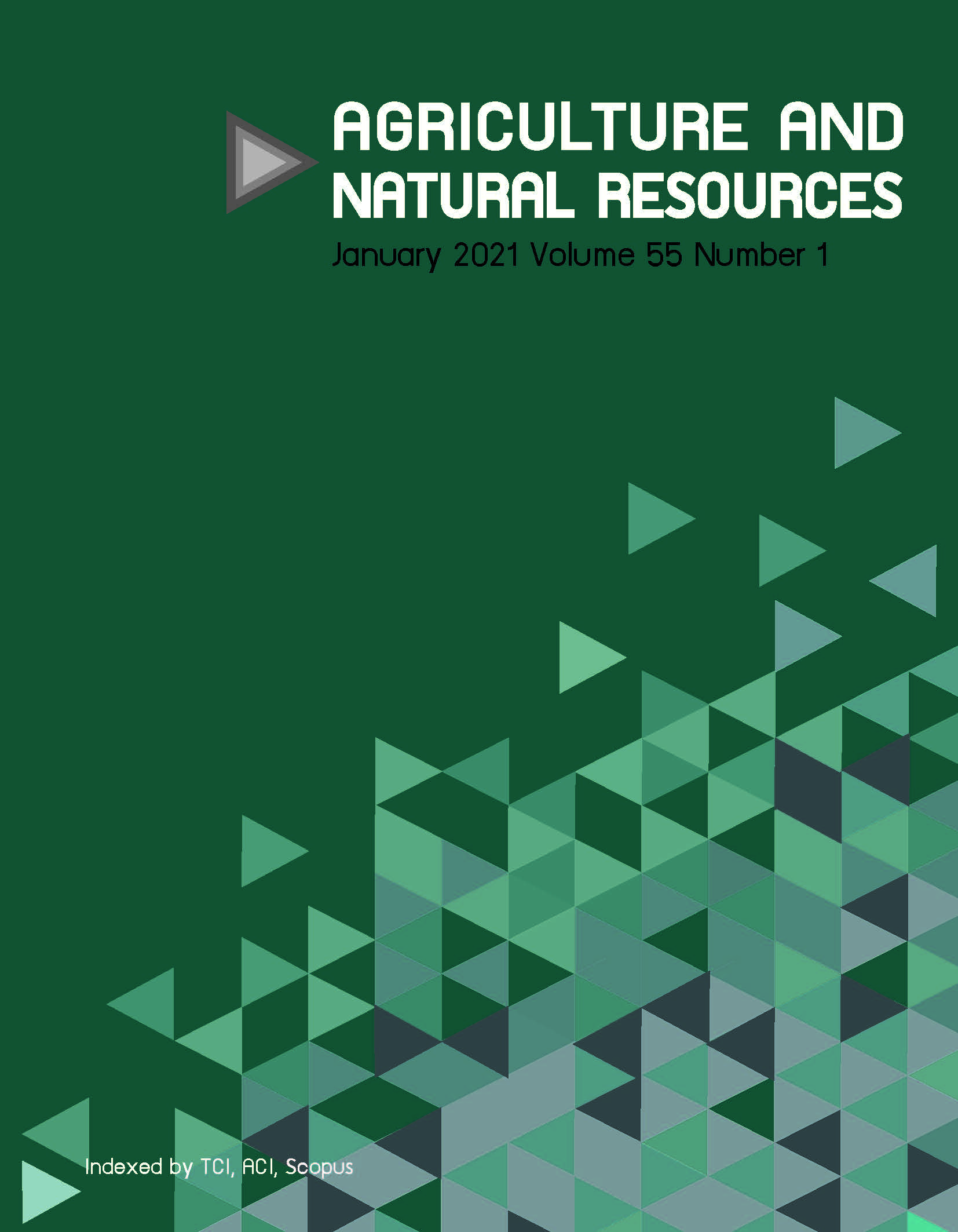Effect of climatic conditions and pest constraints on seasonal yield gaps in pesticide-free vegetable production under integrated pest management in Chiang Mai province, Thailand
Keywords:
Integrated pest management, Pesticide-free vegetable, Seasonal yield gapAbstract
Yield gaps of vegetables in integrated pest management (IPM) practice with no pesticide application are poorly documented in a tropical environment. This study investigated seasonal yield gaps under climatic and pest constraints on 0.36 ha of demonstration field of IPM-pesticide-free vegetable production at the Agricultural Resource System Research Station, Chiang Mai, Thailand. Seasonal yield gaps were quantified from yield records during October 2016 to June 2018. Comparisons of the yield gaps illustrated the seasonal variation of productivity and stability of vegetable yields. In winter seasons, vegetables were the most high-yielding in relation to national yield benchmarks. Most vegetable yields were suppressed during the dry and rainy seasons. Yields of cultivation of coriander and dill were maintained all year round. Risk analysis based on pathogenic and insect pest occurrences and severities were conducted with experienced field staff and by expert reassessment. Infestation of damping off, downy mildew, rust and mosaic viruses were notable in the production systems. Notable risks of insect pest damage were from infestations of aphid, thrip, flea beetle and fruit fly. The total annual income was USD 12,315.72. Mixed and relay cropping sustained overall monthly income in relation to the minimum income in March and May.
Downloads
Published
How to Cite
Issue
Section
License

This work is licensed under a Creative Commons Attribution-NonCommercial-NoDerivatives 4.0 International License.
online 2452-316X print 2468-1458/Copyright © 2022. This is an open access article under the CC BY-NC-ND license (http://creativecommons.org/licenses/by-nc-nd/4.0/),
production and hosting by Kasetsart University of Research and Development Institute on behalf of Kasetsart University.







